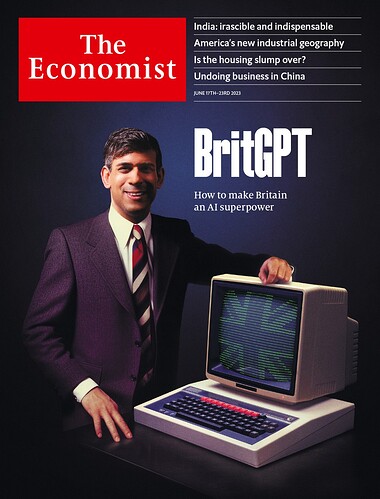The cover for this week’s The Economist features the BBC Micro. ![]()
(I’d very much appreciate it if we could all abstain from any political response here. There are many places to do that.)
Well, thanks to the Tube, the venerable Beeb may be well up to the task. ![]()
I think, it’s a great cover.
We’re definitely in uncanny valley territory with that cover. ![]()
I agree with keeping the political rhetoric out of this forum, however it really is an excellent cover for the economist. It shows the last time the government worked together successfully on the latest in IT (1981, with the semi-recent advent of the Microcomputer), the government - with the state funded BBC created the Computer Literacy Project, which spawned the BBC micro computer, which popped these computers into schools all over the UK. It was a wonderful demonstration of when political discourse can come together for the greater good. I don’t recall the UK government doing something like that since. I haven’t read the article inside the economist, or am aware of the UK’s plans for AI dominance (I left the UK when it all went down the toilet with the GFC). For those of you in other countries outside of the UK, the beeb (BBC Microcomputer) was a great 6502 based machine that arguably outshone the Apple II and contemporaries.
See also the nearby topic
BBC: The Computer Literacy Project
(There’s so much to be said about that project, and about the BBC Micro, but I must restrain myself a little.)
There was the Alvey Programme, the 1984–1990 government programme to support advanced computing. Quite a few of the world “senior luminaries” in AI — including Geoffrey Hinton, I believe — came up through that.
While Alvey did come up with some neat projects, a lot of the government money went to shore up ICL. Since what’s left of them is now known as Fujitsu, and is rather better known for a great unfortunateness in their software for the Royal Mail, it was only a qualified success.
One thing that has affected almost every computer user that was direct result of Alvey are the quirks in the web-safe colour palette. It’s based on the lookup tables in the original IBM VGA card. This used an Inmos RAMDAC to map digital values to analogue colours. Inmos wanted to be better known for the Transputer, the neat but difficult-to-program massively parallel processor system that consumed a good chunk of Alvey funds.
(I suspect that the early days of ARM development at Acorn/Olivetti Research in Cambridge benefited from Alvey money too, but I can’t be sure.)
